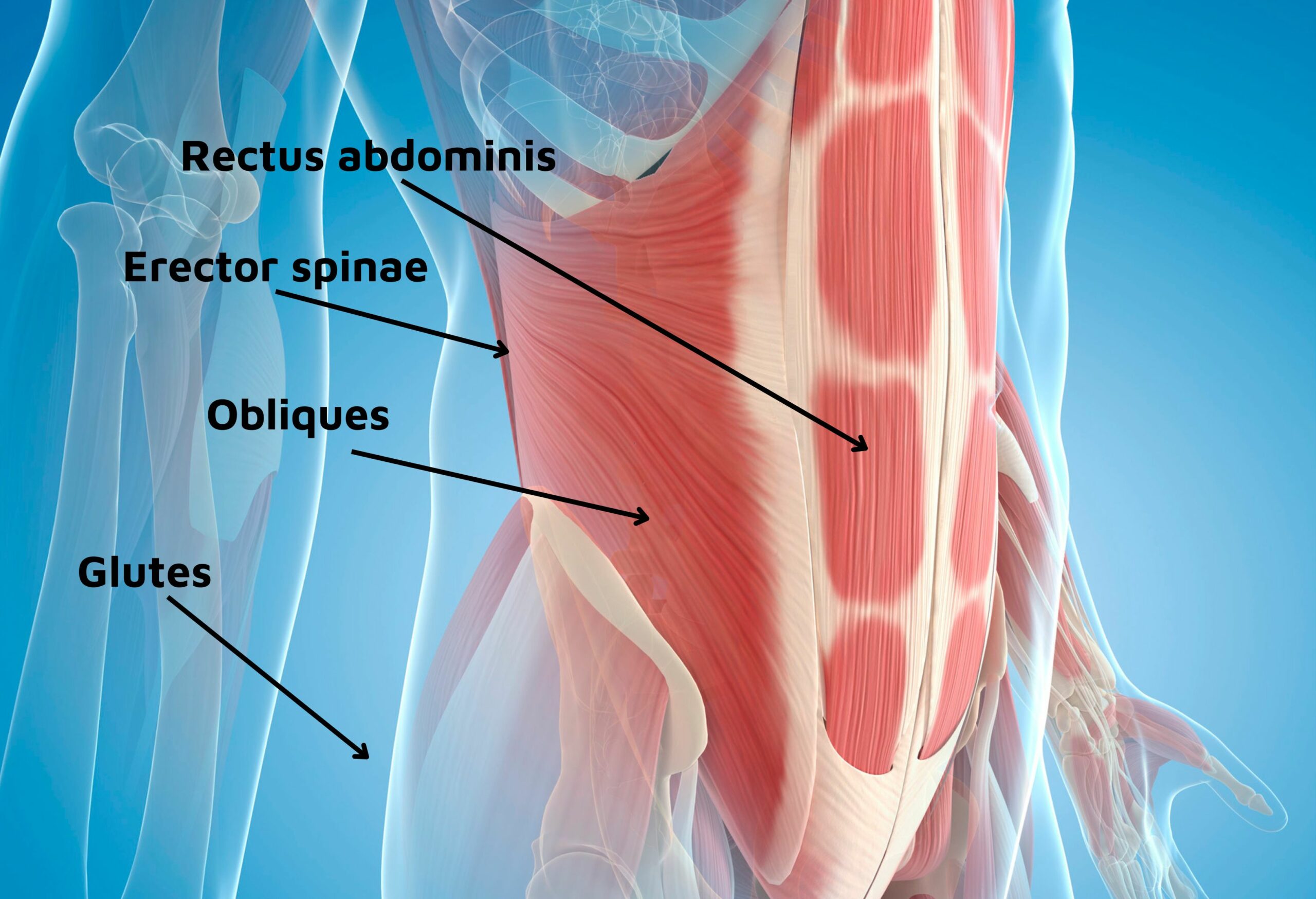Is Your Core Weak? Key Warning Signs and Why Your Core Matters
Is Your Core Weak? Key Warning Signs and Why Your Core Matters

Did you know that a strong core is essential not just for great posture, but for almost every movement you make? If your core muscles are weak, it can lead to a range of problems affecting your comfort, stability, and even your long-term health. Here’s a breakdown of the key muscles that make up your core, and the warning signs to watch for if they’re not strong enough.
What Are the Core Muscles?
Think of your core muscles like a sturdy box protecting your spine and organs. Here’s how the “box” works:
- Abdominal Muscles: The well-known „six-pack“ (rectus abdominis) helps stabilize your organs, while the transverse abdominis—known as the “corset muscle”—wraps around your spine to keep it steady.
- Obliques: These side muscles help you twist and turn, keeping your spine safe during rotational movements.
- Quadratus Lumborum: Located deep in the lower back, this muscle supports spinal stability and helps with breathing.
- Pelvic Floor: These muscles support organs like the bladder and intestines, contributing to stability and sexual health.
- Spine Stabilizers: Key back muscles like the erector spinae and multifidus are core components that help prevent back pain by keeping your spine aligned and strong.

Warning Signs of a Weak Core
- Back Pain: If you frequently experience pain in your lower back, your core could be the culprit. Weak core muscles force your spine to take on more load than it should, which can lead to overworked spinal discs and chronic discomfort.
- Poor Posture: A weak core often leads to a slouched or hunched posture, with a curved upper back and a lower-back arch. This imbalance puts additional pressure on your spine, causing discomfort and strain over time.
- Restricted Movement: Without a stable core, even everyday tasks like bending or lifting can feel awkward or lead to injury. In sports or exercise, poor core stability can limit your ability to lift weights, affecting performance and making it harder to execute moves with proper form.
- Muscular Imbalances: When your core isn’t pulling its weight, other muscles step in, leading to uneven development and strain. This imbalance isn’t just bad for posture; it can also increase your risk of injury, particularly in the back and surrounding structures.
Struggling with Stability During Exercise?
If exercises like pull-ups, squats, or sports like tennis and golf feel challenging, your core may be the reason. Your core provides the stability and balance needed for upper-body strength. Without that, your body has to rely on other muscles, which can lead to strains and injuries over time.
Is Your Spine Sagging When Lying Down?
Here’s a quick test: Lie on your back with your legs bent. If your spine sinks into the floor like a loose line, it may signal a lack of core stability. A strong core should keep your spine neutral and steady, even in a resting position.
Does Your Stomach Stick Out When You Bend Forward?
Stand up straight and bend forward. If your stomach protrudes outward, it could mean that your core muscles aren’t engaging to keep your torso firm and supported. This sign can indicate either weak muscles or excess fat around the midsection, both of which can benefit from focused core training.
Struggling to Stand Up Without Help?
Have trouble standing from a seated position without using your hands? This can signal that your core muscles need strengthening. A stable core allows you to transfer energy efficiently from the lower to the upper body, making movements like standing up easier.
Uneven Gait or Running Pattern?
If you feel unbalanced when walking or running, or sense more strain on one side, it may be a core issue. Your core’s 29 muscles work to keep your upper body stable and balanced, which is essential for a smooth, efficient gait. A stronger core can improve your balance, reduce the risk of falls, and make movement more efficient.
Why Core Strength Is Key for Power and Efficiency
When you walk, run, or even swing your arms, your legs and core work together to transfer power through your body. A strong core ensures that this energy flows smoothly and with minimal effort, enhancing your overall stability and movement efficiency. The more stable your core, the better your performance and the lower your risk of injury.
